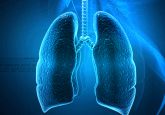Metabolomics pilot study to identify volatile organic compound markers of childhood asthma in exhaled breath

Background: In-community non-invasive identification of asthma-specific volatile organic compounds (VOCs) in exhaled breath presents opportunities to characterize phenotypes, and monitor disease state and therapies. The feasibility of breath sampling with children and the preliminary identification of childhood asthma markers were studied. Method: End-tidal exhaled breath was sampled (2.5 dm3) from 11 children with asthma and 12 healthy children with an adaptive breath sampler. VOCs were collected onto a Tenax®/Carbotrap hydrophobic adsorbent trap, and analyzed by GC–MS. Classification was by retention-index and mass spectra in a ‘breath matrix’ followed by multivariate analysis. Results: A panel of eight candidate markers (1-(methylsulfanyl)propane, ethylbenzene, 1,4-dichlorobenzene, 4-isopropenyl-1-methylcyclohexene, 2-octenal, octadecyne, 1-isopropyl-3-methylbenzene and 1,7-dimethylnaphtalene) were found to differentiate between the asthmatic and healthy children in the test cohort with complete separation by 2D principal components analysis (2D PCA). Furthermore, the breath sampling protocol was found to be acceptable to children and young people. Conclusion: This method was found to be acceptable for children, and healthy and asthmatic individuals were distinguished on the basis of eight VOCs at elevated levels in the breath of asthmatic children.
In the UK, 5.4 million people have asthma of which 1.1 million of these are children. Asthma UK reports that the UK has among the highest prevalence of asthma symptoms in children in the world. The cost of this condition in the UK is ∼£1 billion per annum with over 1 million working days lost to the condition, and over 1100 deaths per annum. Guidelines for the treatment of children and young people with asthma stratify pharmacological interventions according to assessments of disease severity. Current tools for assessing asthma severity are acknowledged to be blunt and largely subjective [1]. Robust, non-invasive characterization of biomarkers of asthma could provide additional, objective, measures of disease control, activity and/or asthma phenotype. Furthermore, such measurements could be used to improve patient care and outcomes. The identification of biomarkers that indicate asthma at a presymptomatic stage would create the potential to mitigate the development of the disease, with prevention being the ultimate aim.
Click here to view the full article.






